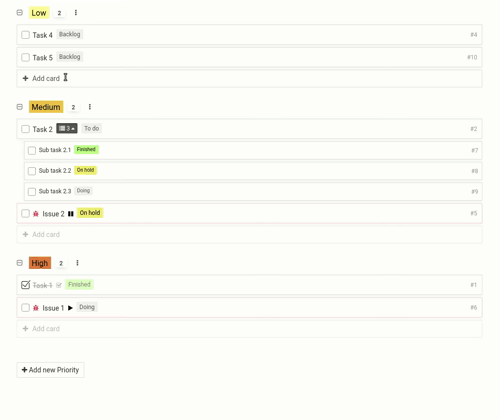10 tips to help you make the most of remote work
In the wake of the Covid-19 outbreak, many businesses were thrown into remote work overnight, others expanded their existing work-from-home policies. In either scenario, managers and employees alike had to make adjustments in order to make the most of remote work.
From upgrading existing work management tools and adopting a more relaxed, collaboration-oriented management style, to finding a daily work routine adapted for the home environment, everything matters in making the transition to remote work smooth.

Remote work is here to stay post-coronavirus
Knowing how to function well in this new normal is crucial not only during the coronavirus pandemic, but after. Forward-thinking companies, such as Twitter, are starting to talk about implementing permanent remote work policies, followed by a number of journalists and business analysts who predict that flexible work hours and telecommuting are here to stay.
This changing, more distributed workplace can be attributed to several factors: companies are empowered to hire top talent from a global pool of candidates, the cost of doing business can decrease without relocation budgets and renting larger office spaces, and finally studies show that - contrary to popular belief - productivity stays the same and often increases when employees are allowed to work from home at least part time.
Managing distributed teams
The future of work requires a new approach to management and a new generation of digital tools for an increasingly distributed workforce. The lack of a solid remote work policy and limited collaboration tools (emails, spreadsheets or worse yet, post-it notes) are no longer enough in the post-coronavirus world, where teams have experienced a more flexible and collaborative work environment, on top of proving that performance is not tied to an office.
To make remote work… work for everyone, managers need to empower teams to manage projects on their own terms, no matter where they connect from. This requires trust, transparency, focus on collaboration and outcomes, instead of clocking in and out.
A crucial aspect of working with distributed teams is giving them the right mix of digital tools: asynchronous (email, message boards) where exchanges don’t happen at the same time, and synchronous (chat, voice chat, conference) for real-time communication, and flexible work management platforms for keeping up to speed on any and all projects.
From making employees shareholders to letting workers take control of their roles, Maxime describes Kantree & Digicoop's path to remote success.#remotework #remoteteam #business #management #collaborationhttps://t.co/flLvL63nj4
— Remote Habits (@remotehabits) August 23, 2020
Recognizing remote work challenges
Working from home can be great: there is no commute, you can sleep longer, you are not distracted by the noise of open office. But working from home (or a cafe) comes with its own set of challenges: inconsistent work hours, the lack of proper collaboration tools, feeling isolated from colleagues, dealing with household distractions, occasional WiFi issues.
If you are not used to working away from the office, it may take time to establish your routine and feel like you’re in a comfortable place to produce quality work. But it can be done.
The first step is to acknowledge that you will have less-than-perfect-days and that you’re not alone in this, especially during the coronavirus situation. The next step is to find a way to overcome the common remote work challenges. Here’s how to do it.
Finding your way: 10 remote work tips
The following tips cover both technical aspects of working from home and self-care recommendations. They are tried-and-tested working for our distributed team here at Digicoop, as well as my experience with freelance work.
In order to make the most of working remotely, combine as many of these tips as possible. However, you may find that some of them are more feasible than others, and that’s ok too. Start by implementing small changes and add on as you go.
1. Create a routine that works for YOU
What gets your going in the morning? Is it running, walking your dog, 10 minutes of yoga? Or do you take a quick shower and then go straight for the coffee machine? Whatever is it, create your wake-up routine as if you were going to the office. After that, find the best times for uninterrupted work when you can tackle the bulk of your work or the most energy-consuming projects. Keep in mind that the best time isn’t necessary morning time. Some people are at their most productive in the afternoon or even later in the day.
2. Set up a designated workspace
Being at home means there isn’t a strict boundary between home and office life, so you need to create one. Dress comfortably, but dress for work to get you in the proper work mindset, even if your commute is 2-minutes long. Find a space that is well-lit and comfortable, with as few interruptions as possible - it could be a proper home office (if you have a spare room), a nook, or a seat at the dining room table, whatever says “office.” Grab your favorite “work” mug, create a work playlist on Spotify etc. - you get the idea.
3. Manage the expectations of your household
If you don’t live alone, you will have to have a conversation with everyone in your household about the work-from-home routine. Consider dividing household chores, creating a schedule (based on things such as uninterrupted work times, conference calls, (or homeschooling if you have children at home), plus keeping noise under control as much as possible.
4. Communicate with your team and clients
Once you’ve talked to people at home, have a conversation with your teammates, managers, clients etc. Together, you will have to find ways to communicate and manage projects together without being in the same brick-and-mortar space. Your company may need to invest in digital tools designed for distributed teams (for example Zoom for conference calls, Slack or Mattermost for instant messaging, Kantree for work management). When you work remotely, all work needs to be digitized and accessible, so that means no post-it notes.

5. Create *realistic* to-do lists and prioritize tasks
When you’re dealing with coronavirus-related stress and when you’re getting used to working from home, it may take longer to finish your tasks. You may have to take a look at your to-do list and shift items around or get deadline extensions. One productivity trick is to tackle projects that are already started to cross things off the list and get extra motivation to tackle the heavy load. What’s important is to keep going without getting burned out. [Have you tried our interactive checklist?]
When you’re working remotely, you may be tempted to take care of household chores as well, but beware of mixing your work and home to-do lists. Find a designated time for chores, so that they don’t interfere with your uninterrupted work time. For instance, throw in a load of laundry when you’re preparing lunch, and avoid the temptation to take a Netflix break.
6. Prioritize sleep (really)
If you get 4-6 hours of sleep per night, do you like how you feel when the alarm goes off? We can only go so long without getting proper amounts of rest. Sleeping 7-8 hours per night may reduce stress levels and irritability. More energy and the ability to focus better can lead to an increased productivity and even greater job satisfaction.
If you feel that it’s absolutely impossible for you to get eight hours, start by going to sleep 15 minutes earlier, then 30 minutes earlier. If you need some help falling asleep, try herbal teas, deep breathing techniques, or gentle bedtime exercise. And don’t forget to put your electronics away at least a half hour before going to bed to avoid blue light stimulation.
7. Eat well (or at least better)
Take advantage of being home to prepare your own meals, chances are you will save money and eat healthier. Research simple meals that are nutritious and won’t make you feel heavy or sleepy in the middle of the day. Having a real lunch break, as opposed to a quick snack by the desk, will help you keep the energy up for the second part of your work-from-home day.

8. Manage your overall stress
It’s easy to get caught up in the news cycle at the time of a global pandemic. If you feel that the situation is getting to you, try to focus on things and people that won’t bring you down. Some people like to keep a journal, as it helps them organize thoughts and relieve stress - even a short paragraph can be therapeutic. Exercising and a social media detox may also help.
9. Exercise (it doesn’t have to be in a gym)
Some of us would never step foot in a fitness club if we got free lifetime membership. When it comes to exercise, the key to keeping it up is finding what works (similar to the remote work routine in #1). Maybe all you need is a few stretches in the morning to wake up your body and energize you, a lunchtime walk around the block to help avoid the afternoon crash, and evening walks or workouts using online videos to help you “close” the day (because it’s easy to keep working when you’re home). Find what moves you and do it regularly.
10. Don’t forget to cut yourself (and others) some slack
Working through the coronavirus pandemic isn’t a normal situation. If you feel like you or your teammates are not being efficient enough, remember that we are learning together as we go. Any setbacks at this time are not reflective of our whole careers. Sometimes you may need to take it easy one day to give your best the next, and the one after that. [How not to feel overwhelmed at work.]

Make Kantree part of your remote work routine to manage projects on your own terms, from anywhere! Start your 15-day free trial today.
The article was first published on Management 3.0 and has been edited for our blog.